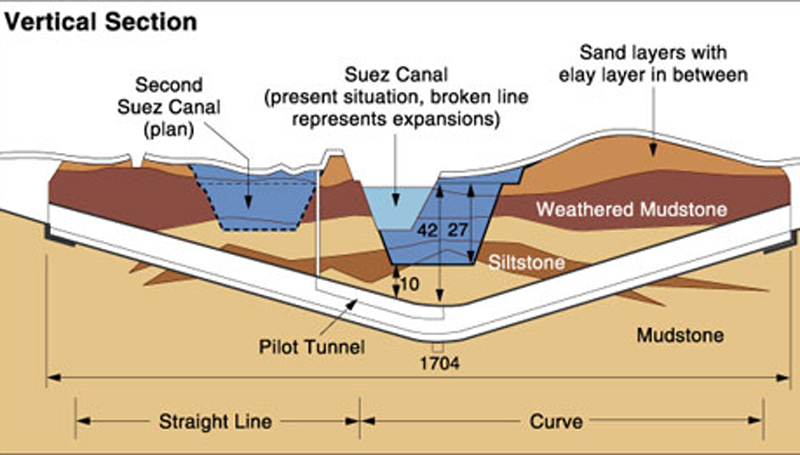Six new tunnels will be dug under the Suez Canal by October to accommodate vehicle and rail traffic. Writes Hassan Baraka
Minister of Transport Hani Dahi says six tunnels will be dug in Port Said and Ismailia in October. Work will begin after the new drilling machines arrive in conformity with an agreement reached with the Armed Forces. The implementation will be under the auspices of the General Tunnels Authority of the ministry and the Armed Forces’ Engineering Authority.
The State had defined and sanctioned the site and routes of the tunnels and chosen the contracting companies to be involved, he said. Three tunnels will be built in Port Said at km. 19.15, two for vehicles and one for the railway to be connected to the current railway network. The Ismailia tunnels would be built at km. 72.500, also with two for vehicles and a third for a railway.
Contracts have been signed with four Egyptian contracting companies to dig and complete these tunnels following the approval of the cabinet. Costs would amount to LE8 billion, he said. A consortium of two companies, Arab Contractors and Orascom, would construct the tunnels in south Port Said at km.19.15, while a consortium of Petrojet and Concorde for Engineering and Contractors would implement the tunnels in north Ismailia at km. 72.500.
International consultation offices to supervise the implementation of the tunnels have been chosen, Dahi said. These are the French company Systra for south Port Said and the US firm CDM Smith for the north Ismailia tunnels.
A new side canal will be dug in the Mediterranean to allow for the entry and exit of ships to east Port Said away from convoys transiting the Suez Canal. This will take seven months to complete.
The unique position of east Port Said makes it a front runner for development in Egypt and for its national projects, according to head of Port Said Authority Director Medhat Attia. The general scheme for developing the harbour will make it one of the ten largest ports in the world, capable of handling 20 million container ships a year. Its current handling of container ships stands at six million over less than 10 years.
The scheme also includes building new quays and 15 various logistics stations; a bourse for pulses; stations for storage; exchange of fuel and vehicle assembly; an international arsenal for manufacturing and maintaining giant ships; and the development of a free zone in the port’s hinterland over an area of 72 kilometres for various industries outside the port. The establishment of a station for wastewater treatment with a capacity of 500 cubic metres daily, a power station with a capacity of 250 megawatts daily and a parking station to accommodate 460 trucks are also included.















